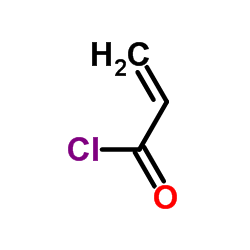451492-95-8
| Name | N-[4-(3-chloro-4-fluoroanilino)-7-[3-methyl-3-(4-methylpiperazin-1-yl)but-1-ynyl]quinazolin-6-yl]prop-2-enamide |
|---|---|
| Synonyms |
HMS3244M15
HMS3244N15 HMS3244M16 UNII-41OXH4FE7B RS0030 AV-412 free base 2-propenamide, N-[4-[(3-chloro-4-fluorophenyl)amino]-7-[3-methyl-3-(4-methyl-1-piperazinyl)-1-butyn-1-yl]-6-quinazolinyl]- N-{4-[(3-Chloro-4-fluorophenyl)amino]-7-[3-methyl-3-(4-methyl-1-piperazinyl)-1-butyn-1-yl]-6-quinazolinyl}acrylamide AV412(Free base) AV-412 (free base) |
| Description | AV-412 (MP412) is an EGFR inhibitor with IC50s of 0.75, 0.5, 0.79, 2.3, 19 nM for EGFR, EGFRL858R, EGFRT790M, EGFRL858R/T790M and ErbB2, respectively. |
|---|---|
| Related Catalog | |
| Target |
EGFR:0.75 nM (IC50) ErbB2:19 nM (IC50) EGFRL858R:0.51 nM (IC50) EGFRL858R/T790M:2.3 nM (IC50) EGFRT790M:0.79 nM (IC50) |
| In Vitro | AV-412 inhibits autophosphorylation of EGFR and ErbB2 with IC50 of 43 and 282 nM, respectively. AV-412 also inhibits epidermal growth factor (EGF)-dependent cell proliferation with an IC50 of 100 nM. AV-412 abrogates EGFR signaling in the gefitinib-resistant H1975 cell line, which harbors a double mutation of L858R and T790M in EGFR[1]. |
| In Vivo | In animal studies using cancer xenograft models, AV-412 (30 mg/kg) demonstrates complete inhibition of tumor growth of the A431 and BT-474 cell lines, which overexpress EGFR and ErbB2, respectively. AV-412 suppresses autophosphorylation of EGFR and ErbB2 at the dose corresponding to its antitumor efficacy. When various dosing schedules are applied, AV-412 shows significant effects with daily and every-other-day schedules, but not with a once-weekly schedule, suggesting that frequent dosing is preferable for this compound. Furthermore, AV-412 shows a significant antitumor effect on the ErbB2-overexpressing breast cancer KPL-4 cell line, which is resistant to gefitinib[1]. |
| Kinase Assay | Recombinant intracellular kinase domains of EGFR, EGFRL858R, EGFRT790M, EGFRL858R/T790M, and purified EGFR from A431 cell membranes are used. Kinase reactions are carried out in 8 mM MOPS (pH 7.0), 0.2 mM ethylenediaminetetraacetic acid (EDTA), 10 mM MnCl2, 10 mM Mg acetate, 0.1 mg/mL poly(Glu, Tyr) 4:1, [γ33P-ATP], and 5–10 mU of enzyme, except that 250 µM of the GGMEDIYFEFMGGKKK peptide substrate is used for EGFRT790M. Phosphorylation is initiated by the addition of ATP and is allowed to proceed for 40 min at room temperature. The reaction is stopped by the addition of 3% phosphoric acid, then aliquots of the reaction mixture are spotted onto a filtermat. After rinsing to remove peptides bound non-specifically, the filter is scintillation counted[1]. |
| Cell Assay | To test the effects of AV-412 on growth factor-dependent cell proliferation, A431 and A7r5 cells are cultured for 24 h at 37°C in the presence of 1 ng/mL epidermal growth factor and 50 ng/mL platelet-derived growth factor, respectively. The 3H-thymidine incorporation during this period is measured[1]. |
| Animal Admin | Mice: For studies examining the dosing schedule in relation to efficacy against TE-8 tumors, AV-412 is administered either once daily, every other day, or once per week for 2 weeks. Mice are killed 1 day after the final treatment, and the tumors are dissected and weighed. For evaluation of tumor phosphorylation, tumor-bearing mice are given a single administration of AV-412 and tumors are dissected 4 h later[1]. |
| References |
| Density | 1.3±0.1 g/cm3 |
|---|---|
| Boiling Point | 672.9±55.0 °C at 760 mmHg |
| Molecular Formula | C27H28ClFN6O |
| Molecular Weight | 507.002 |
| Flash Point | 360.7±31.5 °C |
| Exact Mass | 506.199707 |
| PSA | 73.39000 |
| LogP | 5.22 |
| Vapour Pressure | 0.0±2.1 mmHg at 25°C |
| Index of Refraction | 1.663 |
| Storage condition | 2-8℃ |
|
~49% 
451492-95-8 |
| Literature: US2004/116422 A1, ; Page/Page column 32-33 ; |
|
~62% 
451492-95-8 |
| Literature: WO2007/103233 A2, ; Page/Page column 15 ; |
|
~99% 
451492-95-8 |
| Literature: WO2007/103233 A2, ; Page/Page column 17 ; |
| Precursor 3 | |
|---|---|
| DownStream 0 | |



